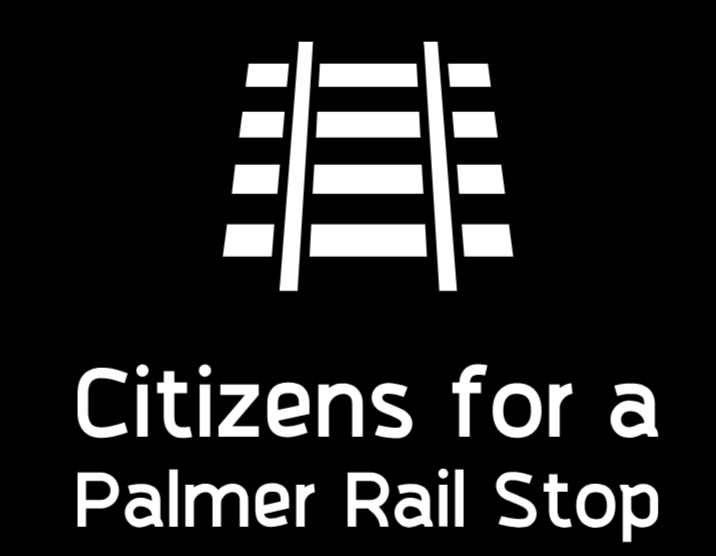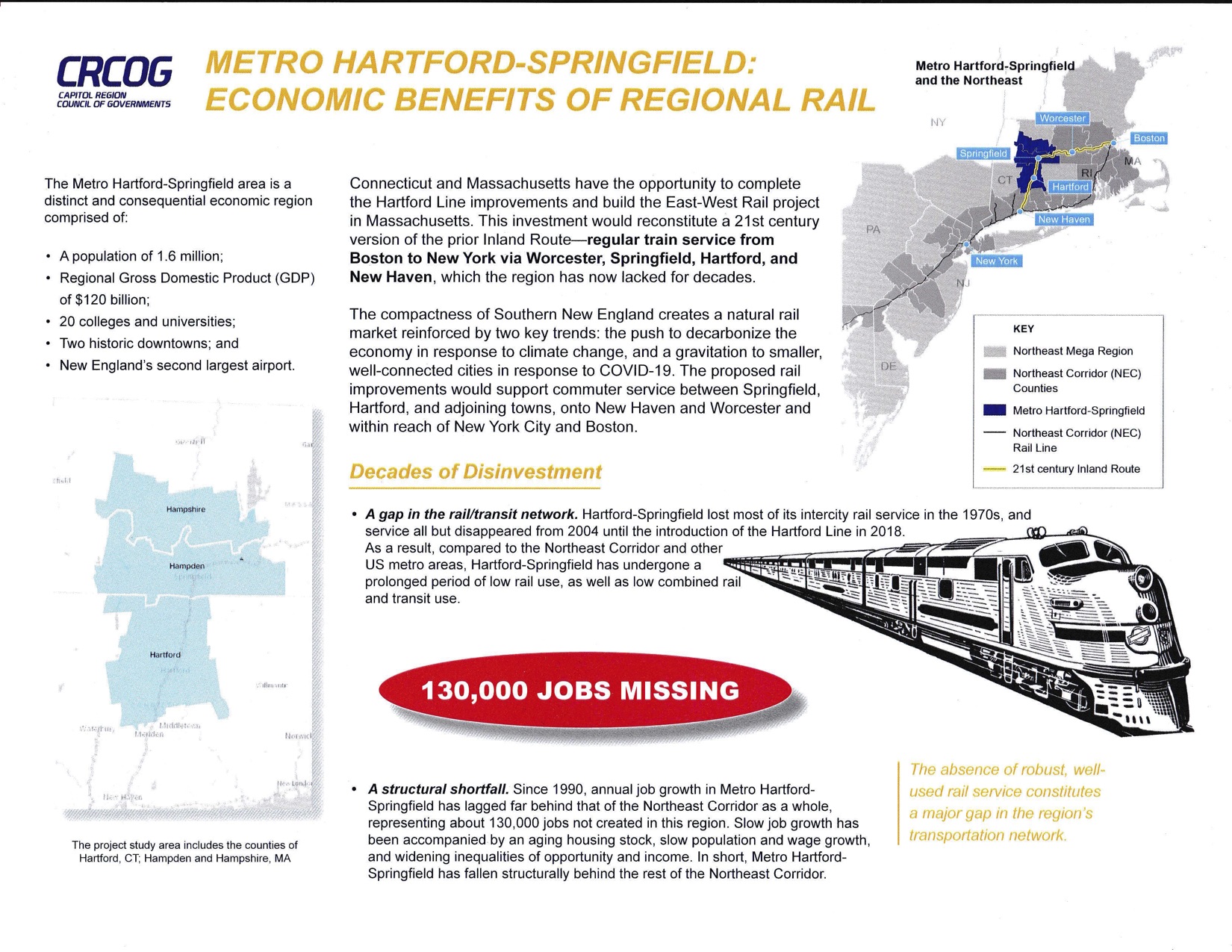Revive the Inland Route!
What’s missing from life in our neck of the woods? About 130,000 jobs not created since 1990 due to the lack of regional and intercity rail connectivity, according to a new study.

On May 6 Congressman Richard Neal hosted a press conference at Springfield’s Union Station to announce the findings of this study, The Economic Impacts of Regional Rail Investment in Metro Hartford-Springfield. Prepared by AECOM for the Capitol Region Council of Governments (CRCOG), the study crunches the numbers to show that continued investment in rail infrastructure on the Inland Route between Boston and New York City could have a 10-to-1 return-on-investment.
Connecticut’s highly-successful CTrail service on the Hartford Line to Springfield commenced in 2018 and serves rebuilt stations on upgraded tracks between New Haven and Hartford. In the year and a half before the pandemic, ridership on the new service reached one million, exceeding expectations, and transit-oriented development brought new life to Connecticut downtowns all along the line.
As the CRCOG study makes clear, similar investment in the track and stations between Hartford and Worcester would generate $47 to $84 billion in new regional GDP over 30 years for the Hartford-Springfield metro area. The study also notes that “With frequent, high-performance service along a modernized Inland Route, Worcester—New England’s second largest city—would become more accessible not only to Springfield, but to Hartford, New Haven, and New York City as well.”
By providing an alternative for rail travel from Boston to New York City, the Inland Route would alleviate overcrowding on the current shoreline route, which is also threatened by climate change-induced flooding. Additionally, frequent train service would reduce highway congestion on Interstates 91, 84, and the Mass Pike, which may soon reach pre-pandemic levels of gridlock. The health and environmental impacts of eliminating carbon emissions would be especially significant for Springfield, which is the fourth largest city in New England but often rates number one in emergency hospital visits for asthma.
The CRCOG study includes a stop in Palmer, which most people know as the Mass Pike exit they take when traveling between Boston and Amherst. Our “Town of Seven Railroads” sits at the junction of the East-West and Central Corridor rail lines, offering a potentially seamless connection to the flagship campuses of UConn to the south and UMass to the north.
During the past decade towns in Palmer’s auto-dependent Quaboag Valley region have struggled to create mass transit options for residents who don’t have cars. A 2019 study by the UMass Amherst Center for Economic Development found that among the 175,000 residents of our 21-community region “a significant number may opt to commute by rail” if trains were to stop again in Palmer.
As Congress crafts an infrastructure bill in the coming months, now is the time for the Commonwealth’s leaders to join together and support the long-delayed, much-studied revival of passenger rail along the Inland Route, connecting all of our state’s three largest cities through the revitalized Hartford Line to metropolitan New York.
Ben Hood and Anne Miller, co-founders of Citizens for a Palmer Rail Stop, originally submitted this on May 10, 2021 as an op-ed to The Boston Globe, which did not acknowledge or publish it. On May 14 they submitted it to Commonwealth Magazine, which published it on June 12, 2021 — see Reviving the Inland Route to NYC.




